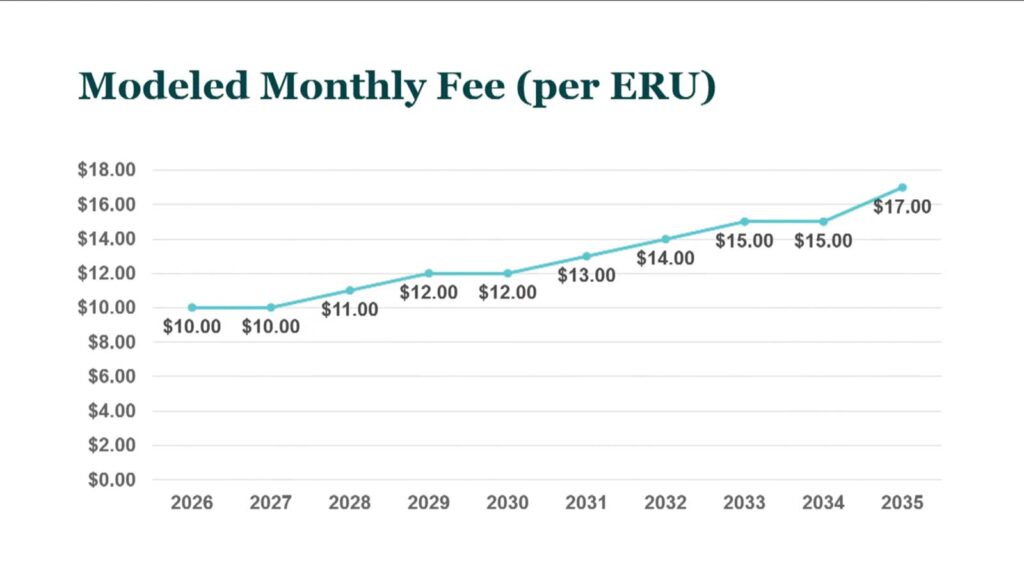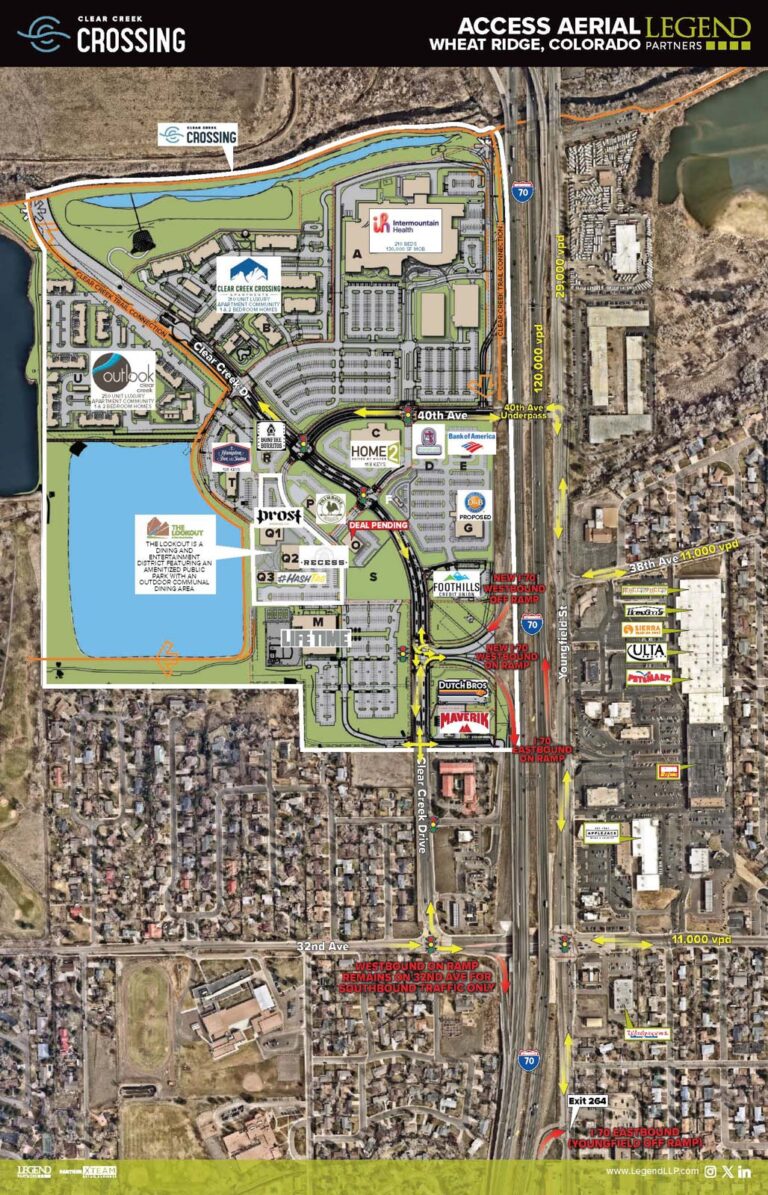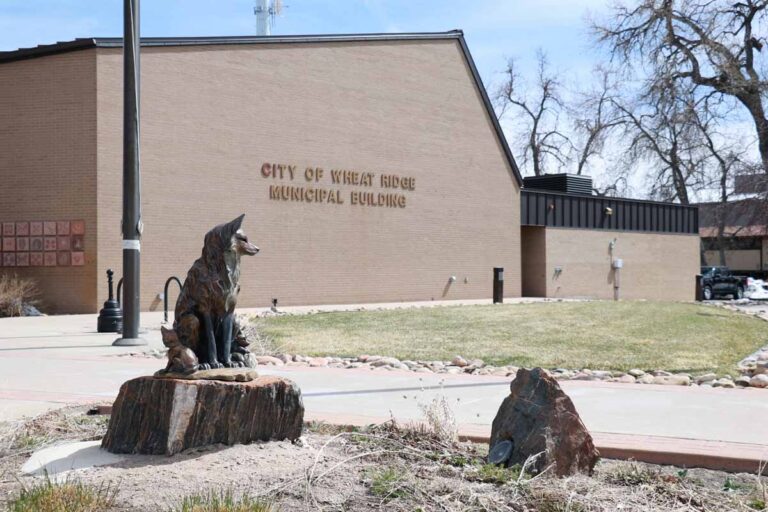After years of watching streets collapse and emergency repairs drain city funds, Wheat Ridge City Council has taken the first step toward creating a stormwater utility that would charge property owners monthly fees to maintain and upgrade the city’s drainage infrastructure.
During an October 13 city council meeting, council members voted to begin implementing a stormwater utility, though no specifics were formally adopted. The decision came after consultants presented a study showing the city faces roughly $35 million in capital improvement costs over the next decade, plus roughly $2 million annually in operations and maintenance.
The proposed fees would start at $10 per month for single-family homes and gradually increase to $17 per month over a 10-year period. For all other buildings, the fees would be calculated based on total impervious surface area for each property: hard surfaces like rooftops, driveways and parking lots that prevent water from soaking into the ground.
“Eight or nine years ago, I probably wouldn’t have been in favor of this, but after watching street after street collapse over the last couple of years, we’ve got to do something,” said Mayor Pro Tem Korey Stites. “We have to take the bull by the horns and solve this problem.”
The decision signifies a shift for the city, which has historically addressed stormwater issues on an emergency basis. Councilmember Rachel Hultin criticized this approach, saying, “The way we’re doing it now is complicated to explain to people, in that we’re waiting for a crisis and then pulling it out of funds.”

Hulti also emphasized current stormwater infrastructure problems. “It’s hard when this is invisible infrastructure, but when it’s not working, it’s very visible,” she said. Hultin also noted that stormwater issues are “aggressively eroding the streets” in her neighborhood.
Several council members expressed frustration with past funding decisions, with councilmember Leah Dozeman saying, “I was anticipating a lot more of the extension of that [2J] half a cent sales tax increase funding to be invested into storm and water drainage projects, and we’ve diverted a lot of it to bike and pedestrian infrastructure. I really don’t want to see us in this place again, lacking foresight and coming to the end of our rope as far as those emergency repairs and issues.”
The city would likely contract with a company to handle billing instead of hiring staff to manage fee collection. Staff stated operational costs for billing would be covered within the overall budget, though specific figures haven’t yet been determined.
Several council members stressed the importance of public outreach as the utility moves forward. Councilmember Dan Larson acknowledged the complexity, saying, “If I had to try to explain what we’re looking at to one of my constituents, I would have a tough time. It’s very complicated.”
Stites agreed, saying, “We need to get out in the community and make sure people understand why we’re doing this. This isn’t just the city wanting more revenue – we have real problems that we need to solve.”
The implementation timeline is expected to take 9-12 months. During that period, staff will develop surface mapping, establish billing policies, create an appeals process, and conduct community outreach before returning to the council with more formalized proposals.
City officials clarified that while they hope to implement the utility in 2026, the timeline may extend into 2027 depending on how long it takes to finalize the technical and administrative details.
For Wheat Ridge residents and business owners, the new monthly fee represents a shift from the current crisis-driven approach to a consistent funding stream. It remains to be seen when the new fees will be implemented and whether they will effectively address the city’s current infrastructural problems.





